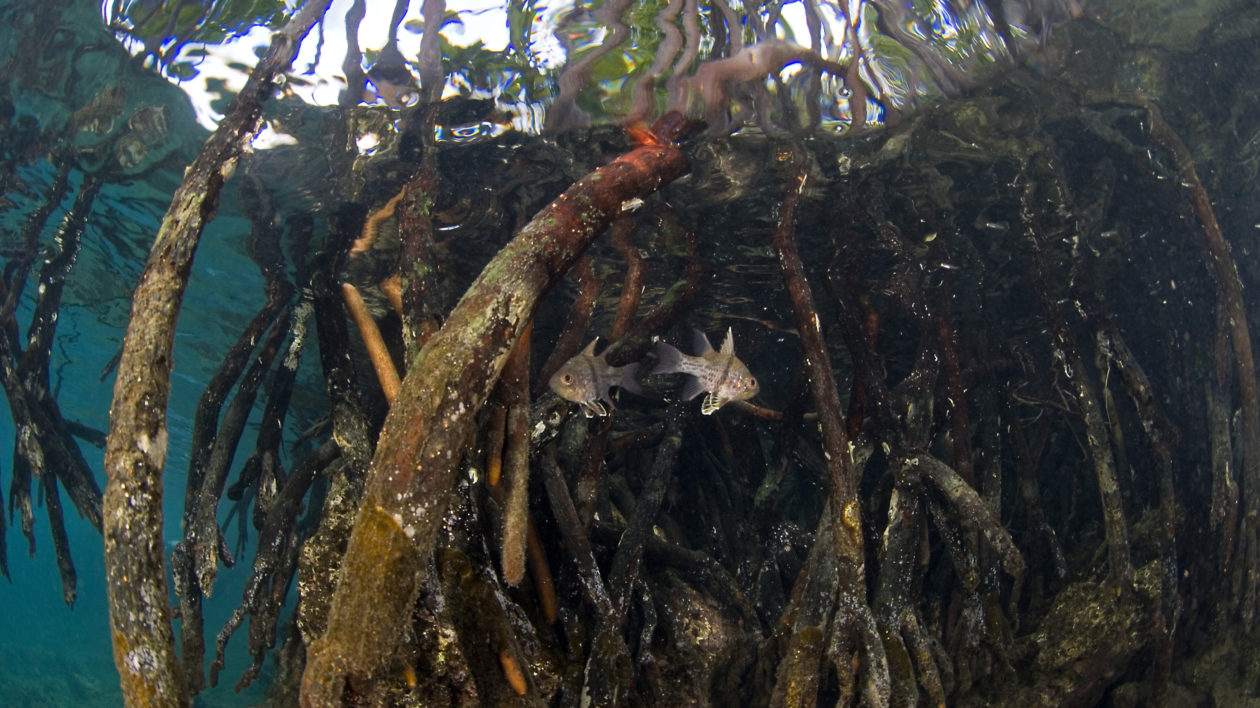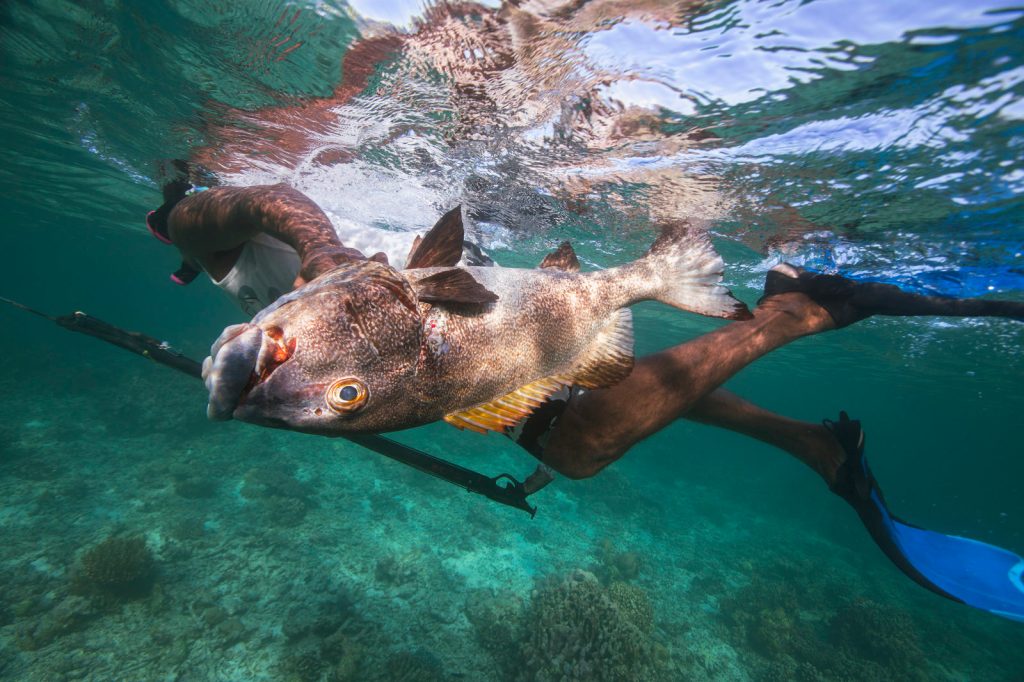Small, community-managed marine protected areas are a common conservation tool throughout the Pacific. But new research shows that this method is failing to protect two important reef fish species in the Solomon Islands.
The Gist
Published in Coral Reefs, this research evaluates the effectiveness of locally-managed marine protected areas (MPAs) in Roviana Lagoon, Solomon Islands.
TNC scientists and local partners first surveyed the sites in 2000, counting populations of two important fish species, bumphead parrotfish and humphead wrasse. They also interviewed fishermen, asking them about their maximum catches of bumphead parrotfish in both the 1980s and early 2000s. Since then, these areas have been protected by community-managed MPAs.
In 2018 the researchers returned to re-survey the sites, and to ask fishermen about their current maximum catches of bumphead parrotfish. Chris Brown, a marine ecosystem modeler at Griffith University, modelled the decline in both species from underwater survey data. He also incorporated the interview data on bumphead parrotfish into a model that allowed him to estimate their abundance in the mid 1980s, just as the fishery became commercialized.
Those results show that populations of adult bumphead parrotfish and humphead wrasse declined by over 70 percent between 2000 and 2018, with bumphead parrotfish populations declining by 92 percent since the 1980s.
The Big Picture
Community MPAs are a popular fisheries management tool across the Pacific, because they incorporate traditional ownership, or tenure, of local peoples into management plans for marine resources. They are often designed to protect culturally and commercially important reef fish species, like the bumphead parrotfish or the humphead wrasse.
“But unfortunately this study is a definite example of where MPAs are not working for these two flagship species,” says Richard Hamilton, director of TNC’s Melanesia program. “In Roviana Lagoon there was tremendous historical abundance, low human population, and moderate fishing pressures — and yet there has been enough land degradation and targeted fishing that, despite management efforts, both of these species can be classified as critically endangered.”
Hamilton suspects that any protection provided by the MPAs is swamped by the negative impacts of commercial logging operations near the lagoon. Sediment washes down from deforested hillsides into the mangrove lagoons, which are the nursery grounds for many reef fish species. Previous TNC research showed that the presence of logging operations was a strong driver of bumphead population decline on nearby reefs.

The Takeaway
MPAs alone will not be enough to effectively protect some marine species, particularly those with large home ranges, or those impacted by on-shore activities like logging. “These results highlight that we need both government-level intervention and community-based management,” says Hamilton.
He says that banning logging is likely unrealistic, but that the Solomon Islands could follow Palau’s example and close these fisheries to allow the populations to recover. “They’re seen a remarkable recovery in 10 years, even though enforcement is still a challenge.”
Much of TNC’s work in Melanesia utilizes MPAs, but they are also working to address some of the landscape-level threats to reefs and marine resources. For example, TNC recently assisted the Solomon Islands’ government with developing the country’s first-ever management measures for bumphead parrotfish and humphead wrasse. They’re also identifying critical nursery habitats, examining other drivers of reef-fish decline, like logging, and helping fisheries monitors accurately assess populations.
“For conservationists,” says Hamilton, “these species are canaries in the coal mine.”




Very informative article that reminds us of the importance of understanding the threats and stressors and then using the right tool(s) for the job. Thank you.
And, I agree with Christina Thompson’s assessment of the article’s title. The title (headline) and subhead seem to be crafted to be provocative, but at the risk of unfairly maligning another useful tool in the conservation toolbox. Some tools are good for one job and some good for others, and sometimes in combination. Unfortunately, the headline and subhead suggest that community-managed MPAs are a bad tool. This is clarified about two-thirds the way through the article. Fortunately, most readers of this blog will read that far, but that’s not the case for many other outlets where people get their news these days.
This article is very interesting and highlights the importance of a holistic approach to conservation that incorporates and responds to numerous threats and drivers of change. The title of this article though led me to believe that the issue at heart was a failure of the MPA rather than the influence of outside factors such as logging and sedimentation. The article tagline which reads, “In the Solomon Islands, new science shows that community-managed protected [areas] are failing to protect two important reef fish species.” suggests that the failure has to do with the community-management of the MPA rather than the aforementioned other influences. A more appropriate tagline might have instead read “In the Solomon Islands, new science shows that the success of community-managed protected areas is threatened by adjacent exploitative activities”.